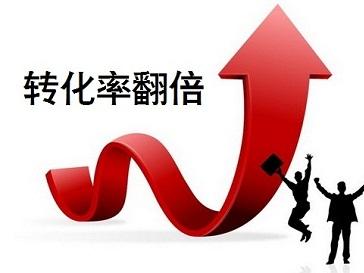As we all know, once the rules for thousands of people and faces come out, many small and medium-sized sellers are in a confused stage, and they are even confused until now, and they can’t even get paid traffic, let alone free traffic. Recently, many merchants are discussing this issue of thousands of people and faces with me. Today, let’s analyze its principles and how to optimize the store’s focus.
Let’s first understand what is a thousand faces?
Thousands of People and Faces means everyone’s Taobao account login. The displayed babies are different. Taobao will record everyone’s search needs and provide similar display babies. For example, I searched for the thermos on Taobao today and browsed related ones. Then next time I open Taobao, my Taobao homepage will display related products, but others’ things are different. Taobao recommends to us to display babies according to everyone’s needs. This is Thousands of People and Faces. Therefore, it is important to set up store tags and group tags, and it is also a place where business friends need to focus on optimizing operations.

1. How does a thousand people work?
Step 1: Buyers enter Taobao. Taobao immediately recognizes the buyer's tag;
Step 2: Find similar people based on the buyer's label;
Step 3: Find the baby they like in common according to similar groups;
Step 4: Among all the same type of treasures on Taobao, find a treasure similar to the sample library. Form a collection of treasures.
These collections of babies will be displayed in front of the buyer. The higher the similarity, the higher the ranking. In statistics, this is called template comparison. At this point, the process of realizing a thousand people and faces is completed.
2. Thousands of people and faces just change the way products are displayed.
1. What has it changed compared to the previous ways?
Method 1: Sales weight sorting: Expressed as a monopoly of strength, which is equivalent to stifling market vitality.
Method 2: Remove time sorting: Expressed as equal distribution, which means discouraging innovation.
Method 3: Sorting of thousands of people and thousands of faces: Expressing that the strong are always strong as homogeneous products, encourage paid promotion of personalized products to rise rapidly, and encourage innovation.
2.What is a label?
A: The so-called tag refers to a collection of feature attributes. There are 3 tags we need to pay special attention to: user tags, store tags, and product tags.
Shop tags
It can be simply understood as the combination of all product labels in a certain store, which usually depends on the main business category of the store. The main category accounts for 90%, which should be the store that Taobao is more optimistic about now (this is somewhat incompatible with the store group model that basically adopts a large number of distribution products).
In other words, when the store positioning is chaotic, that is, the main business category is unclear, the store's label attributes are weakened. You will suffer when calculating weights.
Product label
The product label is about a repositioning under the store label.
This should include many specific attributes, such as gender, age, consumption level, style, unit price and product-related attributes. Product title is of course one of the factors that develop labels.
The system will target the consumer with the preferences of the label based on the basic product tag. For example, your product is a woolen coat, the consumer positioned by the product is a woman aged 18 to 24, the consumption level is white-collar, the style is Korean, the average customer price is in the range of 100 to 200 yuan, and the product attributes are sweet and simple... Then, users with high label matching will be given priority when searching for related products.
User tags
User tags are relatively complex and can be divided into basic tags and behavior tags (people are fickle). The platform will collect basic consumer information, such as membership level, purchasing power, region, etc. (The Internet has no privacy...) These are the basic tags.
By browsing depth, attention, purchases, and historical records of ordering a certain product, etc., the behavior of the buyer is the behavior label.
Of course, the behavior label is to be constantly corrected, and even the basic label is changed. For example, a female white-collar worker often browses luxury goods in the past half month, then the system corrects her original basic label of "average consumption power"... Then, combining behavioral labels and basic labels is the so-called user labels.
3. So how to deal with it?
First of all, the function of the tag is to match. You must conform to the user's basic labels and use behavior labels to target and strengthen consumers' targeted labels.
The scope of strengthening labels is a scope that conforms to the attributes of the product. While the user's label is strengthened, the product is brought into the product through a personalized mechanism for conversion and transaction, which is a way for user labels to give product labels.
Here we add that the layout of the label is to enlarge the selling point and the product attributes, that is, the selling point of the title is in line with the attributes of the user's label product, and a large number of conversions and popularity models are obtained in relatively accurate user tags.
The best part during the period is that the more the crowd labels of the title target words (category words + attribute words) are consistent with the user labels and product labels, which means that the more accurate the crowd labels enter the store.
4. What impact does a thousand people have on search sorting?
A: On the product recommendation page, the advertising effect of various products selected by thousands of people and faces is very good. For example, you may like Taobao homepage and various places.
But on the search page, a thousand people and faces are just one of the conditions for weight. There is an example to prove that when brushing orders, every brusher can find the same treasure. It's just that the rankings are different. This shows that a thousand people have different faces, just a treasure that meets the quality population library. Added sort weight. This can also explain why the express train does not have the function of crowd redirection. Just because the direct train is a search. Search is a designated display for buyers, with thousands of faces and a recommended display for the system.
Thousands of people have different faces, what changes is the baby’s recommendation logic.
Recommendation logic in the PC era: sales are the main weight. The time of the shelf is fair (average).
Recommendation logic in the mobile era: innovation is preferred, and those who are superior will always be strong.



![#Laogao E-commerce Newsletter# [E-commerce Morning News on August 14]](/update/1597367894l972022160.jpg)



 EN
EN CN
CN
